
Last year in March, I happened to be toasting my glass in view of the Acropolis thanks to a nice surprise from my wife and son. The next day, we took a long walk in Plaka. Everyone we met, including the Jamaicans performing music and dancing on the street, spoke in Turkish to us, albeit a few words. When we reached the end of the road after passing dozens of kebap restaurants on each side, we sat down to have a coffee. This was our usual Turkish coffee (they call it Greek coffee – in fact there is even a Turkish brand coffee machine in the airport lounge where you can prepare and drink freshly). Some people were playing backgammon at the table next to ours. A street vendor tried to sell us trinkets. As we were returning to the hotel from the same route, my son who had not been to Athens before said, “Dad, if there is a part of this town that resembles Europe, could we go there? This looks exactly like İstanbul” .
We are so similar with our neighbour Greece. We eat and drink the same things, we emote to the same melodies, and we live in similar houses and deal with similar economic crises. They dance sirtaki, we dance kasap havası to the same music. We are similar indeed, but they don’t attack people who set up a drinking table in the streets with machine guns. The research director of National Hellenistic Research Foundation, an institution similar to our TUBITAK (we met him, he is a biochemical engineer not a zoo keeper!) researches and publishes articles on usage of ultrasonic sound waves in decomposition of chemical substances to eliminate problems arising from heat treatment process; whereas in Turkey a study on “productivity gains of beans that were subject to prayers” gets rewarded. They stay true to originals when restoring historical sites; we make the 2000 year Şile Ocaklı Island Tower look like Sponge Bob. As such, our neighbour does differ from us, and the difference is not one to be taken lightly.
Our neighbour’s audiophile community also does not resemble ours. ACA (Audiophile Community of Athens) members do not boast about having the most expensive and impressive looking systems; they are on a quest to find the most musical ones. Of course, some have systems worth fortunes, but there are also ones who produce their own electronics. Not an insignificant number of members have Ypsilon Electronics equipment at their homes. Please don’t say, “What more, that’s the top of ultra high-end!” Ypsilon is after all locally produced electronics for our neighbours.
We have recently paid a short trip to Athens with my son and Ozan Turan of Audioavm, the distributor for Ypsilon Electronics in Turkey. We saw how Ypsilon electronics were manufactured, had ouzo with the Ypsilon team in a tavern and were guests in George Heropoulos’ home (the President of ACA- Audiophile Community of Athens) that same evening, taking in the most incredible musical feast ever into the early hours of the morning. This short but intense trip left such good impressions that I was compelled to share them. I also expect that this article will be informing music lovers about Ypsilon which is a new brand to Turkey.
Ypsilon Electronics was formed in Greece in 1995. It aims to create music in live performance quality in homes. Its founders Demetris Backlavas and Fanis Lagkadinos are actually expert engineers in live music systems. They used to design tube amplifiers and speakers in their spare time before founding Ypsilon. Every equipment they have produced in the last decade has become a legend. Demetris Backlavas – the designer, brain, part creative director and spokesperson for the brand – has been dubbed Einstein of audio world. I had the opportunity to meet him in the last Munich High End show, but I really got to know him and his partner Fanis during our visit to Athens. Demetris is a shy and unique person who doesn’t mind showing personal interest in every Ypsilon owner. He defines himself as a microphone rather than an engineer. He actually listens to the reference system set up in the workshop at every opportunity as if he is listening to it for the first time, with a critical ear like a microphone. Fanis is not a man of many words. He listens all the time too. I had the chance to chat with him over lunch, we gossiped about audiophile cables. Obviously he has a wealth of knowledge on the subject. He laughs at overly expensive cable brands. He prefers silver as conductors. Actually they use in-house designed silver cables in their reference system. The subject of cables is a dubious one. I will write about it at a later time.
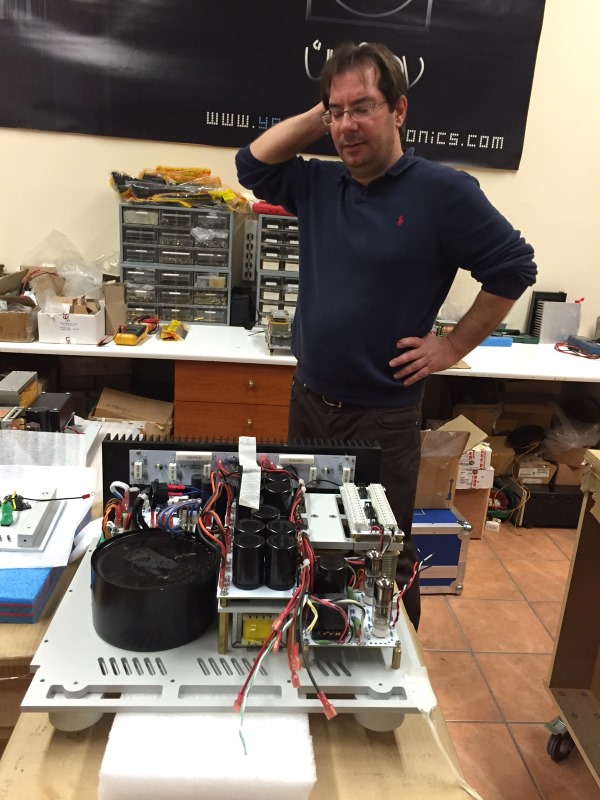
Demetris Backlavas
Ypsilon’s first product was a hybrid integrated amplifier aimed at the local market. The first example of the current product range however is the SET-100 tube amplifier developed over 2002 – 2003. It was presented for the first time in Heathrow Show together with CDT-100 CD player/transport. The following year the PST-100 pre-amplifier and DAC were produced. Both were enhanced over time with modifications and current Mk.2 versions of pre and DAC-100 D/A were presented to the market. Phono pre-amplifier VPS-100 was first showcased in Las Vegas 2009. Integrated amplifier Phaethon was launched in Munich High End 2014. This short history and limited product range is in fact a great success story. Indeed, audio critics cannot sing praises of Ypsilon enough. Every model launched becomes an instant legend. It is no mean feat to underpin such success in the high end world dominated by powerful brands and where competition is fierce.
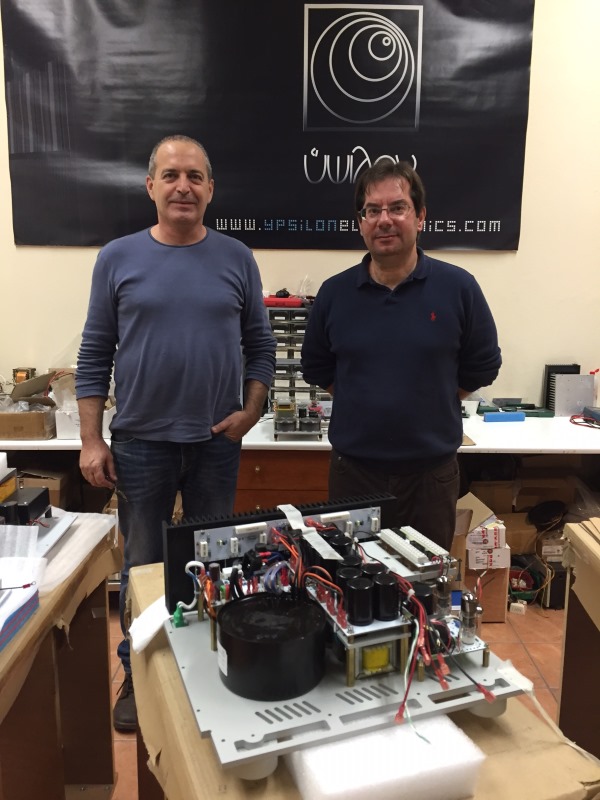
Demetris Backlavas and Fanis Laghadinos
Ypsilon’s production takes place in a tiny workshop. Demetris and Fanis personally take part in production, soldering if needed or winding transformers. Ypsilon produces a maximum of 15 of each model per year. Most of these are sold outside Greece.
The circuit designs of Ypsilon products do not fit today’s trends much. To begin with, they are very simple designs, placing great emphasis on transformer quality in order to minimise any distortion or noise on the signal path. Defining Ypsilon circuit design as two thirds transformer would not be an overstatement. For example, the Phaethon has 11 transformers. Instead of potentiometers, they use transformer attenuators (wound in-house) for volume control. The copper and silver cables used in transformers are specially produced to standards. Most of the products are comprised of hybrid circuits. High quality, rare tubes are used. All the designs have possibly lowest function.
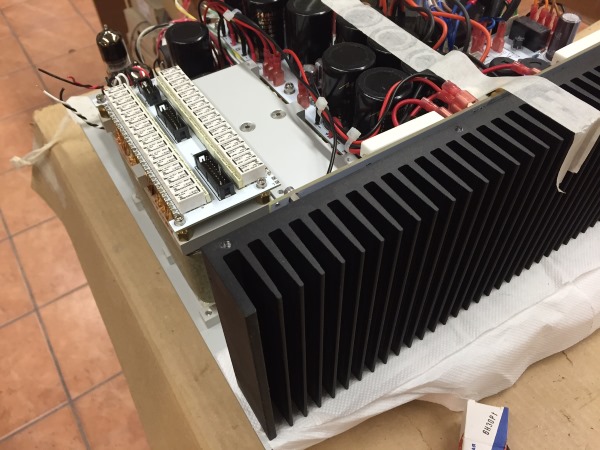
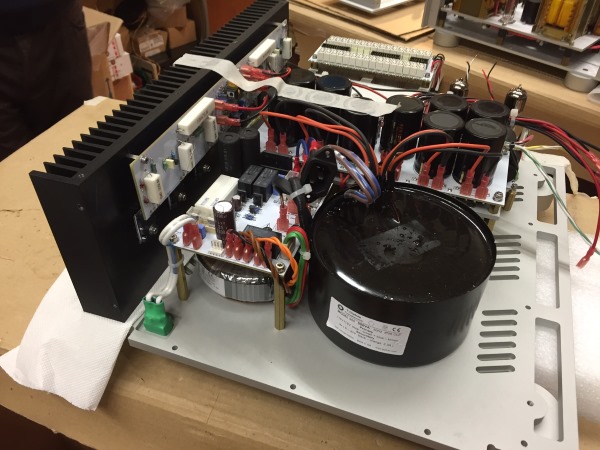
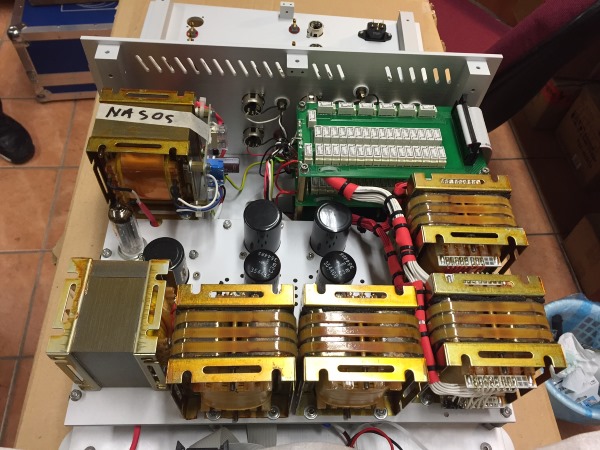
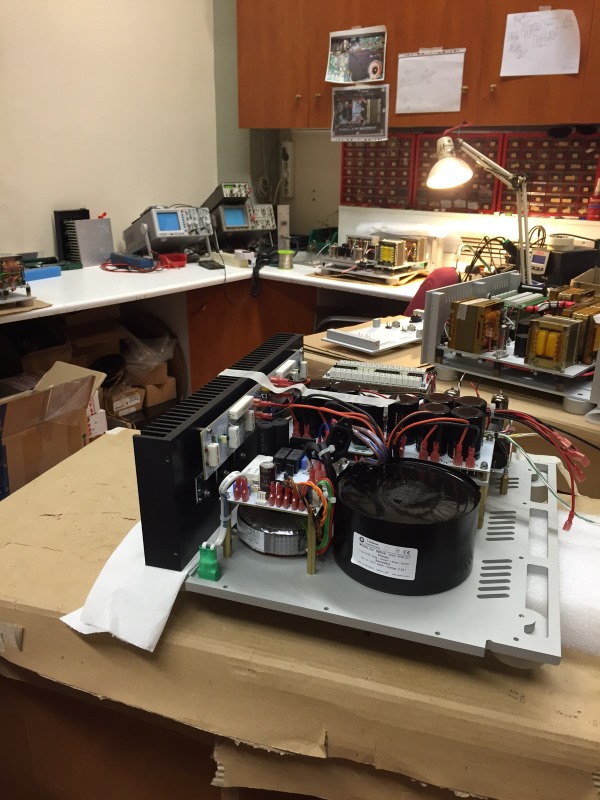
For examples, the VPS-100 phono amplifier only has MM input. For MC cartridges, you have to use one of Ypsilon’s (it could be another brand, but I would not recommend it) step up transformers suited to your cartridge’s specifications. Or as another example, the Phaethon integrated amplifier only has four line inputs. It does not have mono, balance or other similar functions. Backlavas sees each and every one of these as elements affecting sound negatively (and I could not agree with him more). The external design of the products boast the same simplicity: very few buttons, an understated LED screen, a blue light indicating that the device is on. So much so that, there are no control buttons on the CDT-100 CD player/transport, you can only use it with the remote control. You are doomed if you lose the remote control I would say, but it is not a unit that can easily be lost. Speaking of which, all of Ypsilon’s remote controls are made of solid aluminium, quite heavy and large. I would recommend a trip to the nearest hospital in case you accidentally drop one on your foot. The cases and front panels are produced in Germany. The quality of labour is of a standard that can set example to the whole audio world.
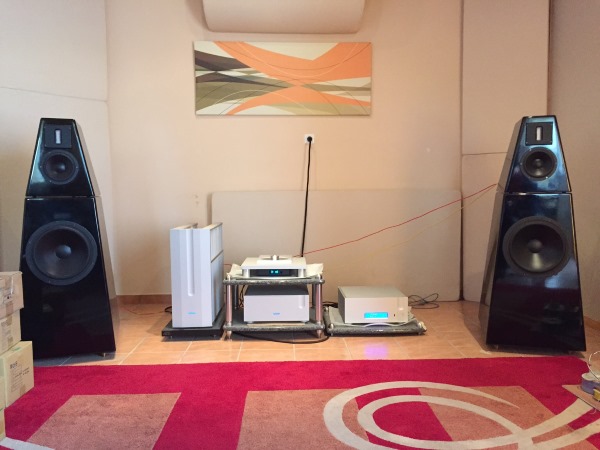
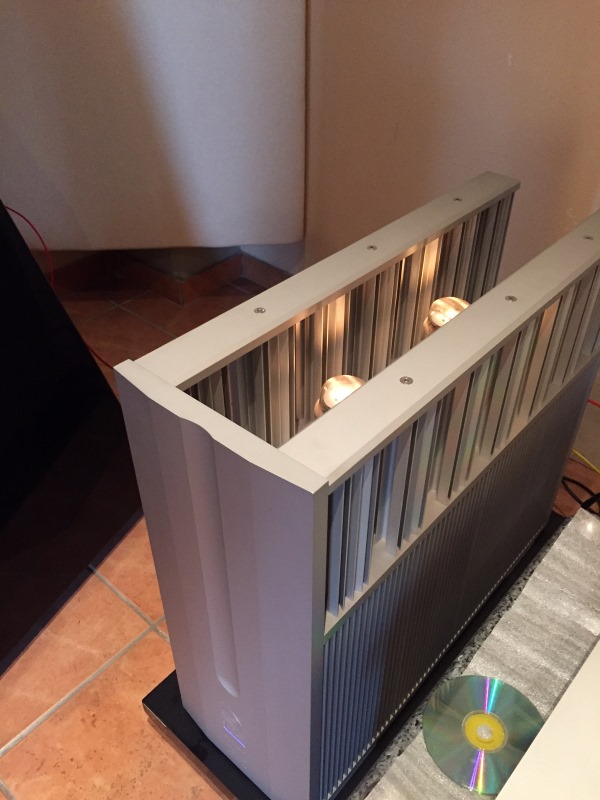
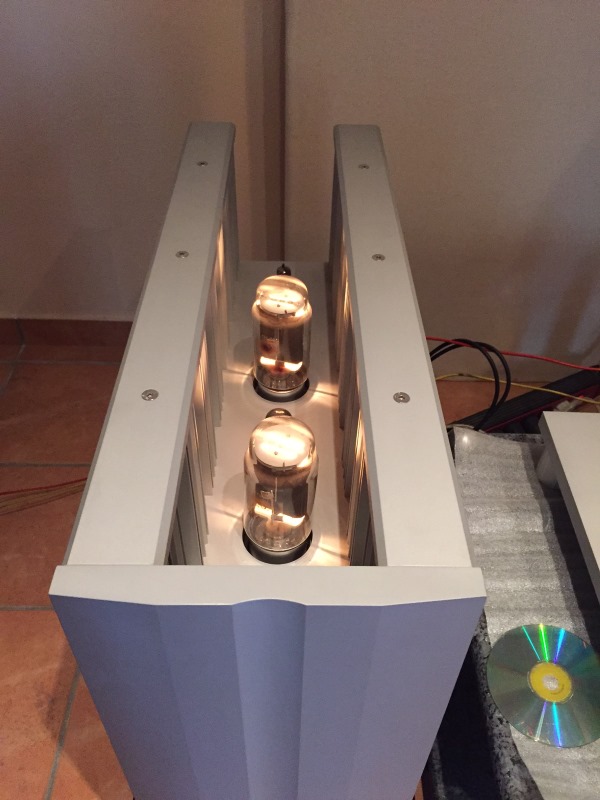
My son showered Demetris with questions during our workshop visit. Demeteris answered all his questions with great patience. We listened to the reference system in the workshop (CDT-100 CD player/transport, DAC-100 D/A DAC, PST-100 Mk.2 pre-amplifier, SET 100 stereo power amplifier which was their first product of the current range, and their in-house designed speakers), we tested cables, we discussed on the sound.
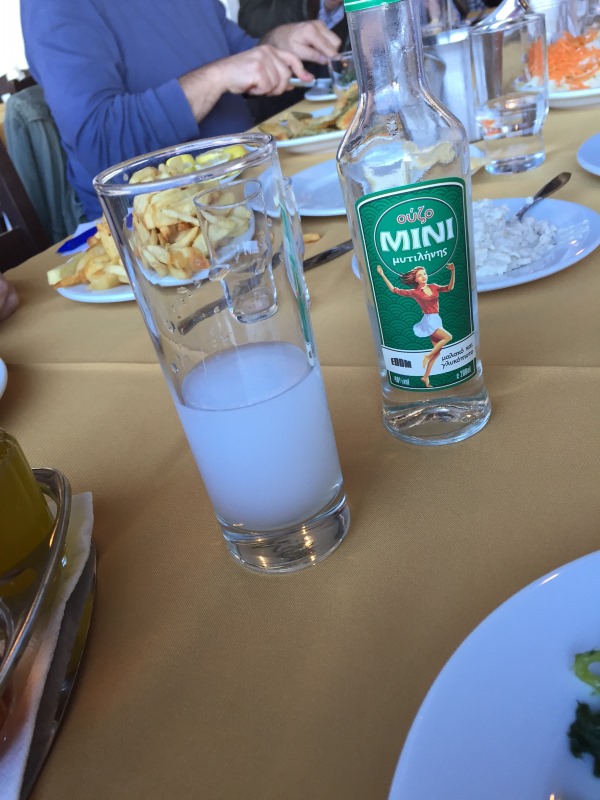
We followed this with lunch in a tavern and then found ourselves in the home of George Heropoulos, the president of the AAC (and the aforementioned director of National Hellenistic Research Foundation, an esteemed engineer of biochemistry). And we completely blew our minds.

Bir yorum ekleyin